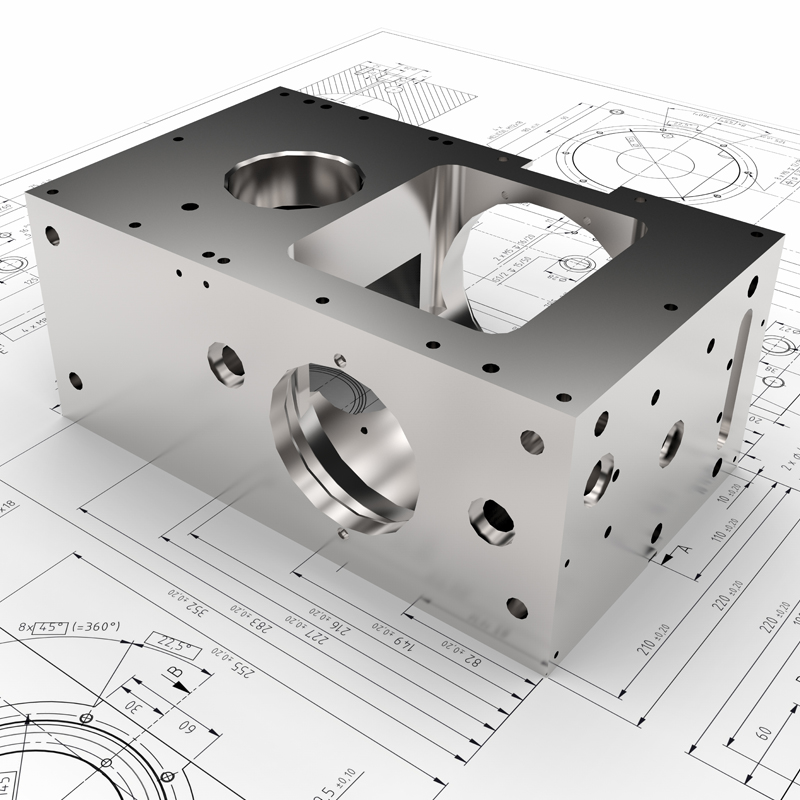Course Description
SmartGD&T Advanced Course
Building Your future
Advanced GD&T for Design
(24 Classroom Hours + 2 Practical Application Days)
Goals
The primary goal is to strengthen participants’ ability to analyze the function of machine part assemblies, their component parts, and the features which they consist of, as well as refine their command of the detailed capabilities of each GD&T tool, so as to improve their abilities to 1) encode part and feature function reliably, and (2) decode GD&T to perform functional tolerance stack-up analysis and convert the code into functional manufacturing and coordinate metrology processes. A secondary goal is to refine the skills of the in-house GD&T Advisor Team to take on these responsibilities themselves.

Duration & Presentation Options:
This course is normally delivered in two consecutive classroom days, and one consecutive application day. Depending on the number of participants and travel logistics, the classroom and practical sessions may also be delivered on separate days, or in half day segments.
Who Should Attend:
All persons dealing with Product Design, Drafting, Tool Design, Machining, Manufacturing, Manufacturing Management, Manufacturing Process Control, Inspection, Gage Design, Coordinate Metrology, Robotic and manual SmartGD&T™ Course Descriptions 2 Assembly, Vendor Relations and Purchasing, even including team members with significant experience, in order to refresh their knowledge and discover new and important fundamental concepts. Management is encouraged to select an initial group of potential internal SmartGD&T Advisors from the group, in order to encourage them to consider taking on the responsibility.
Prerequisites:
Participation in the Smart GD&T course “Intermediate GD&T for Design, Manufacturing & Inspection” or equivalent, and at least one year of design experience.
Preparation:
Participants are encouraged to come armed with lists of questions on topics which have created design, manufacturing, inspection or assembly difficulties in their experience. In case the course customization option is ordered, each participant is encouraged to submit at least one drawing which represents some of her or his current GD&T concerns. These should be collected and reviewed by the in-house course coordinator and made available to the instructor well in advance for preparation. Participants are encouraged to bring pencils with erasers (not pens), and pads to class.
Course Materials:
Course handouts include a dedicated course manual and, based on client preferences, copies of the SmartGD&T Pocket Guide and SmartGD&T Encoding Process Guides for each participant, as well as the use of SmartGD&T student training model sets.
Confidentiality:
In the case of in-house corporate classes, a non-disclosure agreement should be implemented between the sponsor and Multi Metrics, Inc. prior to inception. Drawings and parts brought to public classes should be non-proprietary in nature.
Syllabus
Day 1:
Note: Because of the advanced knowledge and concerns of the participants, the choice of topics dealt with is heavily influenced by their interests and by the drawings they submit (see participant preparation)
1. A fast paced review of Y14.5M 1994 & 2009 GD&T concepts, tools and rules
2. The Geometry Control Chain concept
3. Selection criteria for Datum Features and assessment of their viability
4. The Smart GD&T™ Encoding Process in Detail
5. Selection criteria for Geometry Control Tools
6. Selection criteria for Tolerance Zone Size Modifiers (S), (M), (L)
7. Selection criteria for Tolerance Zone Mobility Modifiers (S), (M), (L)
8. Selection criteria for Projection, Free State, ALL OVER, All Around and Tangent Plane modifiers
9. Selection criteria for Tolerance Values
10. Using the Virtual in-space and Virtual in-material Boundary concepts as the basis for controlling mating feature geometry
11. An Encoding Case Study using client drawings for two mating parts, including tolerance value selection and balancing, followed by iterative analysis of the proposed code followed by re-encoding efforts.
Day 2:
1. A review of the impacts of and applications for Compound versus Composite Feature Control Frames and of the Y14.5 2009 Standard introduced Degrees of Constraint Modifiers.
2. Managing the geometry of non-rigid plastic and sheet metal parts using constraint notes and the Free State modifier
3. Fundamental Tolerance Stack-UP Analysis (TSUPA) processes and Tools
4. Tolerance Stack-UP Analysis (TSUPA) demonstrations and exercises
5. Special Topics: Bidirectional Position Tolerancing / Boundary Position Tolerancing / use of Zero Tolerances at MMC / Managing draft in molded parts / drawing ergonomics to ease the interface with manufacturing
6. Other
7. Grand Review
Application Day 3:
Practical sessions include assessing, repairing and refining the GD&T on client drawings, and discussing their impact on Manufacturing and Inspection. It is here that participants interested in joining or forming the internal GD&T Advisor team will be able to experiment with and refine their skills with instructor support.
let’s get connected
Have a Question?
Do you have questions on the courses or looking to sign up?
Get in touch today!

